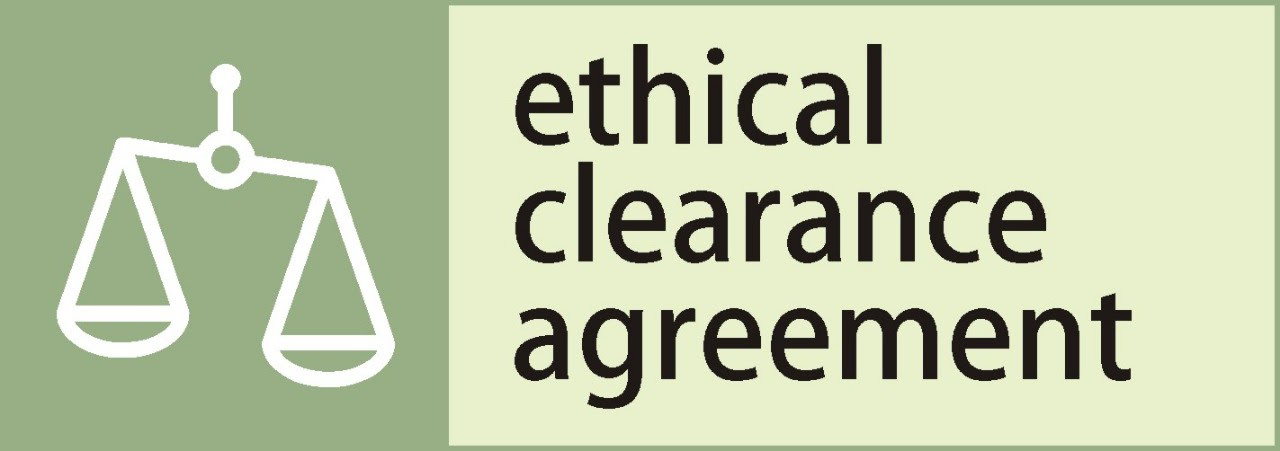Disaster Management in Tourism: Public-Private Collaboration and Early Warning Innovations in Bali and Yogyakarta
DOI:
https://doi.org/10.24843/JKB.2025.v15.i02.p06Abstract
This paper examines the collaborative roles of the public and private sectors in tourism disaster management, with a focus on Bali and Yogyakarta, Indonesia. These regions, renowned for their tourism significance, are highly vulnerable to natural disasters such as volcanic eruptions and earthquakes. Employing a multiple-case study approach, the research utilized semi-structured interviews with tourism stakeholders and focus group discussions with experts. The findings reveal notable differences in disaster preparedness between Bali and Yogyakarta, shaped by variations in policies, industry structures, and resource capacities. Drawing on Collaborative Governance Theory, the study underscores the critical role of structured stakeholder engagement in fostering shared goals, resource pooling, and mutual accountability in disaster management. Additionally, the research highlights the potential of integrating Indonesia’s early warning technologies—such as the Multi-Hazard Early Warning System (MHEWS), tsunami and weather alerts by BMKG, and volcano hazard warnings by PVMBG—into localized disaster management frameworks to enhance preparedness and response. Public-private collaborations at both national and regional levels emerge as pivotal for strengthening disaster resilience in tourism-dependent areas. By aligning collaborative efforts with technological advancements, this study offers actionable insights for improving disaster management practices, safeguarding the tourism industry, and ensuring the well-being of affected communities. The research underscores the importance of comprehensive guidelines, enhanced stakeholder coordination, and the adoption of innovative technologies to mitigate disaster risks and promote sustainable tourism.
References
Ansell, C., & Gash, A. (2008). Collaborative governance in theory and practice. Journal of Public Administration Research and Theory, 18(4), 543–571. https://doi.org/10.1093/jopart/mum032
Asano, K. (2012). Rethinking a business continuity plan (BCP): What should companies learn from the Great East Japan Earthquake? Nomura Research Institute Paper, (173).
Bajracharya, B., Hastings, P., Childs, I., & McNamee, P. (2012). Public-private partnership in disaster management: A case study of the Gold Coast. The Australian Journal of Emergency Management, 27(3), 44–50.
Badan Pusat Statistik (BPS) Yogyakarta. (2023). Tourism statistics. https://yogyakarta.bps.go.id
Badan Pusat Statistik (BPS) Bali. (2023). Tourism statistics. https://bali.bps.go.id
Braun, V., & Clarke, V. (2006). Using thematic analysis in psychology. Qualitative Research in Psychology, 3(2), 77–101. https://doi.org/10.1191/1478088706qp063oa
Buchholz, K. (2023). The countries with the most active volcanoes. Statista. https://www.statista.com/chart/27828/countries-with-the-most-volcanoes-that-have-been-active-since-1950/
Cochrane, J. (2010). The sphere of tourism resilience. Tourism Recreation Research, 25(2), 173–185. https://doi.org/10.1080/02508281.2010.11081632
Faulkner, B., & Vikulov, S. (2001). Katherine, washed out one day, back on track the next: A post-mortem of a tourism disaster. Tourism Management, 22(4), 331–344. https://doi.org/10.1016/S0261-5177(00)00069-8
Goromaru, H., Kokogawa, T., Ueda, Y., & Fukaya, S. (2021). Study of new normal business continuity to improve resilience against uncertain threat. Journal of Disaster Research, 16(1), 31–39. https://doi.org/10.20965/jdr.2021.p0031
Hall, C. M. (1999). Rethinking collaboration and partnership: A public policy perspective. Journal of Sustainable Tourism, 7(3–4), 274–289. https://doi.org/10.1080/09669589908667340
Hall, C. M., Safonov, A., & Naderi Koupaei, S. (2023). Resilience in hospitality and tourism: Issues, synthesis and agenda. International Journal of Contemporary Hospitality Management, 35(1), 347–368. https://doi.org/10.1108/IJCHM-11-2021-1428
Hanka, W., Saul, J., Weber, B., Becker, J., & Harjadi, P. (2010). Real-time earthquake monitoring for tsunami warning in the Indian Ocean and beyond. Natural Hazards and Earth System Sciences, 10(12), 2611–2622. https://doi.org/10.5194/nhess-10-2611-2010
Johnston, D., Becker, J., Gregg, C., Houghton, B., Paton, D., Leonard, G., & Garside, R. (2007). Developing warning and disaster response capacity in the tourism sector in coastal Washington, USA. Disaster Prevention and Management: An International Journal, 16(2), 210–216. https://doi.org/10.1108/09653560710739590
Kausar, D. R. K., Agustan, A., Imran, S., Rosmalia, D., & Firmansyah, R. (2023). Setting priorities for public–private collaborations in tourism disaster management planning. All Earth, 35(1), 242–251. https://doi.org/10.1080/27669645.2023.2241212
Kausar, D. R., Stevenson, N., Rosmalia, D., & Imran, S. (2024). A case study of disaster management planning in Indonesia: Tourism industry perspectives. In Handbook on crisis and disaster management in tourism (pp. 68–78). Edward Elgar Publishing. https://doi.org/10.4337/9781839105388.00011
Kefan, X., & Jia, L. (2014). Early-warning management of regional tourism emergency: A holistic approach. Kybernetes, 43(3/4), 497–512. https://doi.org/10.1108/K-08-2013-0184
Kriswati, E., Prambada, O., Syahbana, D. K., Sugiarto, B., Winarso, G., Arifianti, Y., Kurniawan, I. A., Virtriana, R., Banggur, W. F. S., Agustan, A., Prawidisastra, F., & Pratama, A. (2022). Modeling of Mount Batur lava flows and ejecta as new approaches in Indonesian short-term volcanic hazard assessment. In 2022 IEEE Asia-Pacific Conference on Geoscience, Electronics and Remote Sensing Technology (AGERS) (pp. 24–29). IEEE. https://doi.org/10.1109/AGERS56232.2022.10093495
Mahadewi, N. M. E., Bendesa, I., & Antara, M. (2014). Factors influencing tourists’ revisiting Bali as a MICE destination. EJ Tourism, 1(1), 1–11.
Matsuoka, Y. (2022). ARISE Japan Public Symposium 2022 showcases practical approaches to building the resilience of travel destination communities via the strengthening of SMEs. ARISE Global Network. https://www.ariseglobalnetwork.org/news/arise-japan-public-symposium-2022-showcases-practical-approaches-building-resilience-travel
Mutiarani, R. A., Puspitawati, N. M. D., Partama, I. G. Y., Pandawana, I. D. G. A., Pramawati, I. D. A. A. T., Kumara, D. G. A. G., & Sudipa, I. G. I. (2025). Dewi Sinta: Mewujudkan desa wisata sigap dan tangguh bencana melalui Community-Based Early Warning Systems (CBEWS) di Desa Yehembang Kangin-Jembrana. Jurnal Widya Laksmi: Jurnal Pengabdian Kepada Masyarakat, 5(1), 56–62. https://doi.org/10.59458/jwl.v5i1.130
Ngin, C., Chhom, C., & Neef, A. (2020). Climate change impacts and disaster resilience among micro-businesses in the tourism and hospitality sector: The case of Kratie, Cambodia. Environmental Research, 186, 109557. https://doi.org/10.1016/j.envres.2020.109557
Nguyen, D. N., Imamura, F., & Iuchi, K. (2017). Public-private collaboration for disaster risk management: A case study of hotels in Matsushima, Japan. Tourism Management, 61, 129–140. https://doi.org/10.1016/j.tourman.2017.01.014
Nguyen, D. N., Imamura, F., & Iuchi, K. (2018). Barriers towards hotel disaster preparedness: Case studies of post-2011 tsunami, Japan. International Journal of Disaster Risk Reduction, 28, 585–594. https://doi.org/10.1016/j.ijdrr.2017.12.005
Prideaux, B., Thompson, M., Pabel, A., & Cassidy, L. (2021). Managing climate change crisis events at the destination level. Journal of Hospitality and Tourism Management, 49, 451–459. https://doi.org/10.1016/j.jhtm.2021.09.015
Prideaux, B., & Beirman, D. (2024). Key issues in crisis and disaster management and research. In Handbook on crisis and disaster management in tourism (pp. 1–20). Edward Elgar Publishing. https://doi.org/10.4337/9781839105388.00007
Priyono, K. D., & Lestari, F. E. (2017). Peningkatan kapasitas masyarakat dalam menghadapi bencana erupsi Gunungapi Kelut melalui pariwisata bencana (disaster tourism) di Kecamatan Nglegok Kabupaten Blitar. URECOL, 93–104.
Ridder, H. G. (2017). The theory contribution of case study research designs. Business Research, 10, 281–305. https://doi.org/10.1007/s40685-017-0045-z
Ritchie, B. W. (2004). Chaos, crises, and disasters: A strategic approach to crisis management in the tourism industry. Tourism Management, 25(6), 669–683. https://doi.org/10.1016/j.tourman.2003.09.004
Septiana, M. E., Wardoyo, M. A. I., Praptiwi, N. Y., Ashari, A. N. S., Ashari, A., Susanti, N. I., & Nugrahagung, P. P. (2019, June). Disaster education through local knowledge in some area of Merapi volcano. In IOP Conference Series: Earth and Environmental Science (Vol. 271, No. 1, p. 012011). IOP Publishing. https://doi.org/10.1088/1755-1315/271/1/012011
Takamatsu, M. (2024). Tourism crisis response manual developed through a private and public partnership: The Fuji Five Lakes Tourism Federation (FFLTF). In Handbook on crisis and disaster management in tourism (pp. 79–93). Edward Elgar Publishing. https://doi.org/10.4337/9781839105388.00012
The World Bank. (2020). Resilient industries in Japan: Lessons learned in Japan on enhancing competitive industries in the face of disasters caused by natural hazards. https://documents1.worldbank.org/curated/en/757291604041567018/pdf/Resilient-Industries-in-Japan-Lessons-Learned-in-Japan-on-Enhancing-Competitive-Industries-in-the-Face-of-Disasters-Caused-by-Natural-Hazards.pdf
Troll, V. R., Deegan, F. M., Jolis, E. M., Budd, D. A., Dahren, B., & Schwarzkopf, L. M. (2015). Ancient oral tradition describes volcano–earthquake interaction at Merapi volcano, Indonesia. Geografiska Annaler: Series A, Physical Geography, 97(1), 137–166. https://doi.org/10.1111/geoa.12059
Yin, R. K. (2018). Case study research and applications: Design and methods (6th ed.). Sage Publications.
















